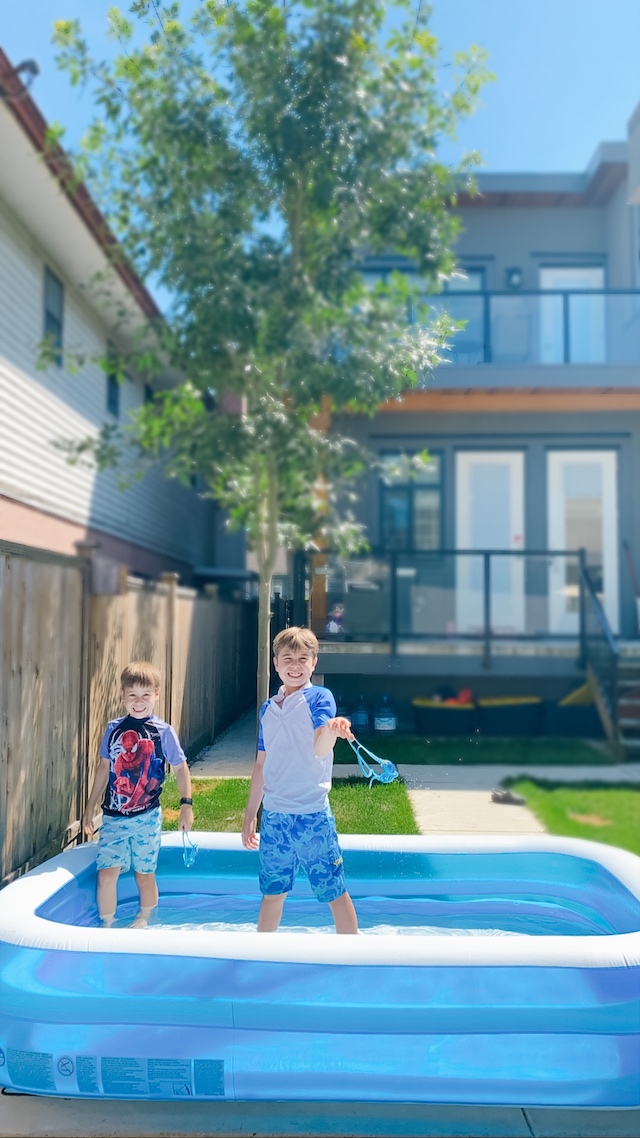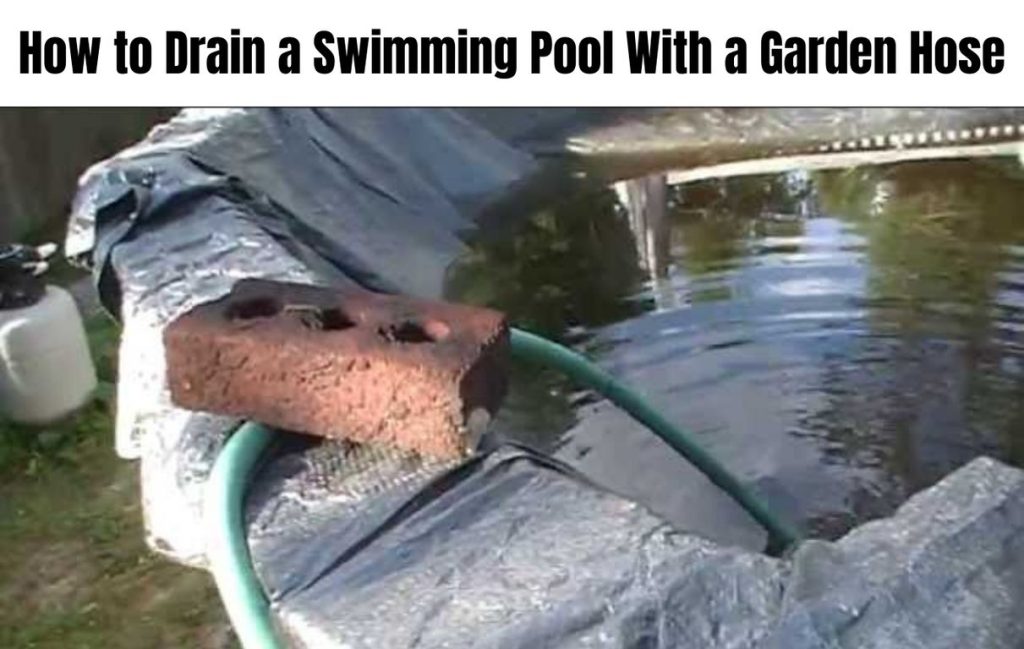Draining a swimming pool is an essential maintenance task that should be done periodically. Whether you need to empty your pool for cleaning, repairs, or due to excessive rainfall, knowing how to drain it properly is crucial. In this article, we will guide you through the step-by-step process of draining a swimming pool using a garden hose.

Credit: www.onesmileymonkey.com
Step 1: Prepare Your Equipment
Before you start draining your pool, you need to make sure you have the necessary equipment and tools. Here’s what you’ll need:
- A garden hose long enough to reach a suitable drainage area.
- A submersible pump or a siphon.
- A pool vacuum or skimmer basket to catch debris.
- A pool chemical test kit (optional but recommended).

Credit: www.amazon.com
Step 2: Determine the Drainage Area
Identify a suitable drainage area for the water from your pool to flow. This area should be able to handle large volumes of water without causing any damage or flooding. Common options include a storm drain, a sewer line clean-out, or an area of your property that naturally absorbs water.
Step 3: Set Up the Submersible Pump
If you are using a submersible pump, place it in the deepest part of the pool. Ensure that the pump is submerged in the water and connected to a power source. Attach a garden hose to the pump’s outlet port, making sure it reaches the designated drainage area.
Step 4: Start Pumping the Water
Turn on the pump and let it do its job. Monitor the water level closely to avoid draining the pool too quickly or completely. It is important to maintain a balance and prevent damage to the pool structure. If you notice any issues, such as the water level dropping too rapidly, turn off the pump immediately and reassess the situation.
Step 5: Using a Siphon Method
If you don’t have access to a submersible pump, you can set up a siphon to drain your pool water. Begin by placing the garden hose in the pool, submerging it until all air bubbles are released. Once the hose is filled with water, pinch the end, and quickly move it to the designated drainage area, lower than the pool’s water level. Release the end of the hose to start the siphoning process.
Step 6: Watch for Debris
While draining the pool, it’s crucial to keep an eye out for debris. If you have a pool vacuum or skimmer basket, use it to catch any leaves, twigs, or other objects that may clog the hose or pump. Removing debris regularly will help maintain the efficiency of the draining process.
Step 7: Monitor Water Quality
During the draining process, you may want to monitor the quality of the water using a pool chemical test kit. This can help you determine if there are any imbalances in the water chemistry that need to be addressed before refilling the pool.
Step 8: Refill Your Pool
Once the pool has been drained to the desired level, it’s time to refill it. Switch off the pump or siphon and disconnect the garden hose from the drainage area. Close all valves or taps that were used in the process. Fill the pool slowly, ensuring the water is properly balanced and chemically treated according to the recommended guidelines.
Frequently Asked Questions
Q: Can I drain my swimming pool with a garden hose?
A: Yes, you can use a garden hose to drain your pool. However, it may take a significant amount of time depending on the size of your pool and the water flow rate of the hose.
Q: How long does it take to drain a swimming pool using a garden hose?
A: The time to drain a pool with a garden hose varies based on factors like pool size, hose diameter, and water flow rate. It could take several hours to several days for complete drainage.
Q: What is the best method for draining a swimming pool with a garden hose?
A: The best method is to attach the hose to a submersible pump placed in the deepest part of the pool. This ensures efficient drainage as the pump removes water more effectively.
Q: Do I need any special equipment to drain my pool with a garden hose?
A: While a garden hose is sufficient for draining, using a submersible pump can expedite the process. Additionally, you may need hose clamps or adapters to secure the hose to the pump.
Q: Are there any precautions I should take when draining my pool with a garden hose?
A: Avoid draining water onto areas prone to flooding or erosion. Also, ensure the hose outlet is directed away from your home’s foundation to prevent water damage.
Q: Can I reuse the water drained from my swimming pool for other purposes?
A: Yes, you can reuse pool water for purposes like watering plants, cleaning outdoor surfaces, or refilling decorative ponds, provided it doesn’t contain harmful chemicals.
Q: What should I do with the water from my swimming pool once it’s drained?
A: Dispose of pool water properly to prevent environmental harm. Consider using it for irrigation or contacting local authorities for guidance on safe disposal practices.
Q: How often should I drain my swimming pool using a garden hose?
A: The frequency of draining depends on factors such as water quality, usage, and maintenance. Generally, pools may need draining every few years to remove excess minerals and contaminants.
Final Words
Draining a swimming pool with a garden hose is a relatively simple task as long as you follow the proper steps and precautions. Always be mindful of the water level and avoid draining the pool too quickly to prevent any potential damage. By regularly maintaining and cleaning your pool, you can ensure it remains in optimal condition for years to come.





